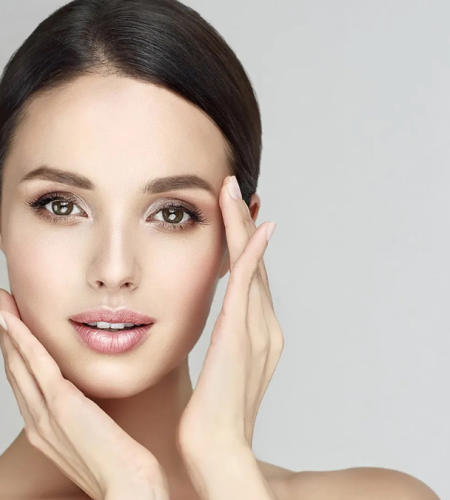In recent years, dermal fillers have become a go-to solution for enhancing facial features, reducing wrinkles, and achieving a more youthful appearance—without going under the knife. However, dermal filler procedures aren’t suitable for everyone.
As much as the beauty world celebrates the magic of cosmetic injectables, there are certain individuals for whom these treatments may pose unnecessary risks or lead to undesirable results. If you’re beauty-conscious and researching your options, it’s vital to know if you fall into the category of people who should avoid or postpone dermal filler treatments.
This blog will guide you through key scenarios where dermal fillers might not be the right choice. Our goal is to help you make informed decisions that align with both your health and your beauty goals.
Health Conditions That Make Dermal Fillers Risky
Before considering any cosmetic procedure, your overall health should be a top priority. Dermal fillers are generally safe when administered by qualified professionals, but individuals with certain medical conditions may experience complications.
Autoimmune Disorders
People with autoimmune diseases such as lupus, rheumatoid arthritis, or multiple sclerosis may face a higher risk of inflammation, swelling, or poor healing after filler injections. Because your immune system is already compromised or overactive, dermal filler procedures could trigger unwanted immune responses.
Severe Allergies
Most dermal fillers contain hyaluronic acid, a naturally occurring substance in the body. However, some also contain lidocaine to reduce discomfort during the procedure. If you have a history of severe allergies or anaphylaxis, especially to medications or anaesthetics, you may be at higher risk of an allergic reaction.
Skin Infections or Active Acne
If you have cold sores, skin infections, or cystic acne, it’s essential to wait until these conditions are fully treated. Injecting fillers into or around affected areas could spread infection or worsen inflammation. Your cosmetic practitioner may recommend antiviral medication before a procedure if you’re prone to cold sores.
Bleeding Disorders and Blood Thinners
Individuals with bleeding disorders like haemophilia or those taking anticoagulant medication (e.g. aspirin or warfarin) should be cautious. These conditions increase the risk of excessive bruising, prolonged swelling, or haematomas at the injection site. Always inform your injector about your full medical history to ensure safe treatment.
Pregnancy and Breastfeeding: When to Postpone
Many beauty lovers want to maintain their glow during pregnancy or after giving birth—but cosmetic injectables, including dermal fillers, aren’t recommended during this time.
Lack of Safety Data
There is currently insufficient research on the effects of dermal fillers during pregnancy or while breastfeeding. Most Australian clinics adopt a conservative approach and advise women to wait until after pregnancy and lactation before undergoing treatment. The priority is always the safety of both mother and baby.
Hormonal Changes Affect Results
During pregnancy and postpartum, your body experiences significant hormonal changes. These fluctuations can cause water retention, skin sensitivity, and changes in skin texture—all of which may affect how fillers settle or how your skin reacts. It’s best to allow your hormones to stabilise before opting for any aesthetic enhancements.
Unrealistic Expectations and Psychological Readiness
Cosmetic treatments, no matter how advanced, have their limits. While dermal fillers can enhance your appearance subtly and effectively, they’re not a cure-all for deeper emotional or psychological concerns.
Body Dysmorphia and Appearance Anxiety
If you’re struggling with Body Dysmorphic Disorder (BDD) or have a history of mental health issues related to body image, dermal filler procedures might not provide the relief or confidence boost you’re seeking. In fact, they could worsen emotional distress if the results don’t align with your idealised image.
It’s important to be mentally prepared and have realistic expectations about what cosmetic enhancements can achieve. Dermal fillers should be viewed as a tool to enhance your natural beauty, not as a solution to deep-seated insecurities.
Social Media Influences and Beauty Standards
We’re constantly bombarded with filtered images of celebrities and influencers on social media. However, trying to replicate those looks exactly—whether it’s high cheekbones or exaggerated lips—often leads to disappointment.
A professional injector will always aim for natural-looking, harmonious results, not dramatic transformations. If you’re chasing perfection or trying to look like someone else, it may be worth reassessing your motivations before proceeding.
Age Considerations and Maturity
While dermal fillers are FDA-approved for adults aged 18 and over, younger individuals should be especially cautious.
Young Adults and Preventative Treatments
There’s a growing trend of women in their early 20s seeking preventative fillers. While there’s nothing inherently wrong with starting early, it’s crucial to assess whether you truly need the procedure or if you’re influenced by current trends. Your skin may still be firm and plump naturally—meaning fillers aren’t necessary yet.
Older Adults and Skin Laxity
On the opposite end of the spectrum, older individuals may find that fillers aren’t effective on their own due to deeper wrinkles or advanced skin laxity. In such cases, a combination of treatments—like skin tightening, laser, or thread lifts—may be more suitable. A professional assessment is essential to ensure the right treatment plan for your skin’s condition.
Complementary Options Like Eyebrow Microblading in Melbourne
If you’re looking to enhance your natural features without the use of injectables, consider cosmetic treatments like eyebrow microblading in Melbourne . These procedures offer semi-permanent solutions that define your facial features and give you a polished look—without altering your skin’s structure.
Eyebrow microblading is perfect for those who want fuller, well-shaped brows without the daily hassle of makeup. The technique involves fine, hair-like strokes to mimic real brow hairs, delivering a natural, long-lasting result.
These alternatives are ideal for beauty lovers who may not be suitable candidates for dermal filler procedures due to medical reasons, lifestyle factors, or personal preference.
Conclusion: Beauty Starts with Awareness
While dermal fillers are a powerful option in the world of non-invasive cosmetic treatments, they’re not right for everyone. From underlying medical conditions to emotional readiness and lifestyle factors, several considerations can influence whether you’re a suitable candidate.
At the end of the day, your safety and satisfaction come first. If you have doubts, health concerns, or just need expert advice, it’s always best to consult a qualified practitioner who understands both your medical history and aesthetic goals.

